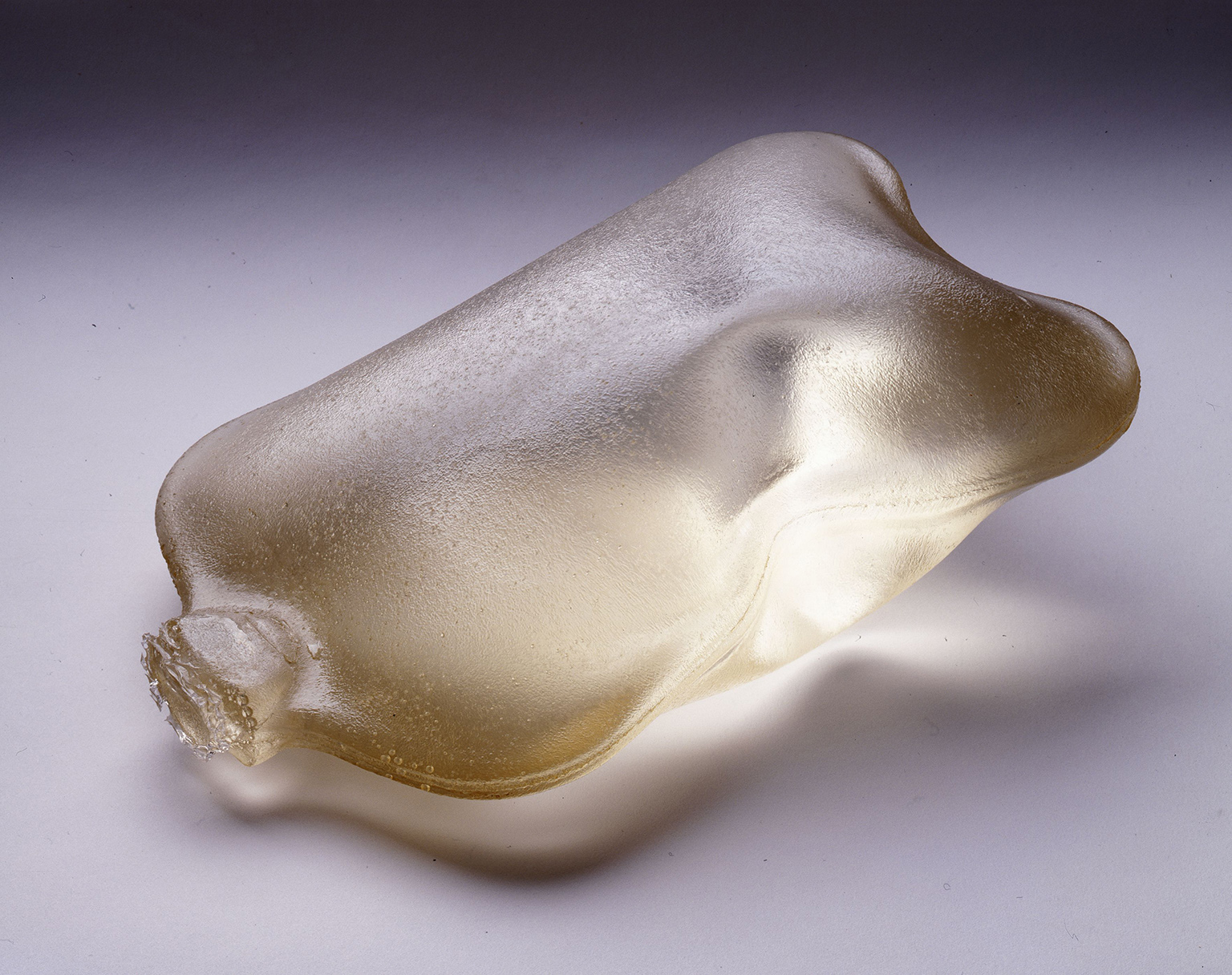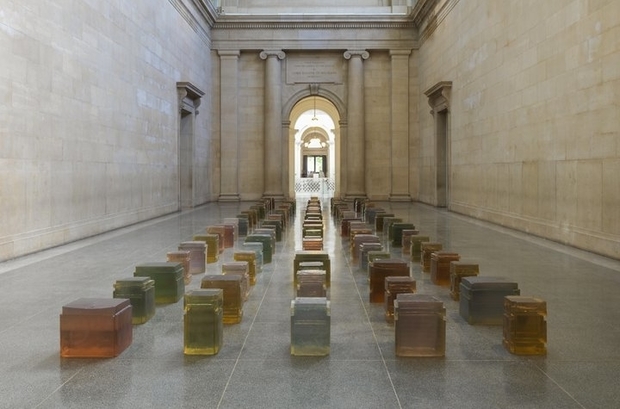NATALYA FALCONER reviews ‘Rachel Whiteread’ at Tate Britain.
Can the concept of quiet art exist? Art that is not highly vocal, teetering between a murmur and being fully audible? Rachel Whiteread’s work is exactly that. Her stand-alone exhibition at Tate Britain, which she refers to as a ‘survey’ than a ‘retrospective’, is a room full of whispers. The feeling arises immediately from seeing her cast concrete cabin Chicken Shed (2017) commissioned specially to remain outside of Tate Britain’s Duveen Galleries. Her debut of this cast of her friend’s chicken shed in Norfolk is part of a series she calls ‘Shy Sculptures’ that exist in remote global locations, touching a Norwegian fjord to California’s Mojave desert. Chicken Shed may be austere in its bleary grey concrete façade, but shrill it is not. Its title only furthers its ‘shyness’.
Interestingly, Whiteread’s quiet works of casted spaces have historically been commissioned for the loudest of public spaces. The Judenplatz Holocaust Memorial Nameless Library (2000) in Vienna, the Fourth Plinth sculpture Monument (2001) in Trafalgar Square. Whiteread’s notoriety stems from her Turner Prize winning and publicly-dividing House (1993): the temporary public sculpture, in the form of a concrete cast of an East London house, sealed Whiteread’s fate as the quietest of the YBAs.
What makes her works so ‘quiet’ is that she discerns what most of us pass over; Whiteread acknowledges the forgotten space. She resuscitates these often neglected, invisible spaces that have wasted away, filling their bellies thick with textures of flesh-like rubber, industrial resin, concrete, plaster, wax, even jewel-coloured glass. The exhibition is an homage to the arduous process of casting. Time consuming and time-defying, casting involves a speedy mortality of the original object and subsequent immortalising of the new space/object. 19th century sculptors referred to the process of bronze casting as ‘life, death, and resurrection’. Whiteread is the modern answer to the Medieval fanaticism with alchemy.

There is a real magic in transforming the hollow interior into a tangible substance, filling a void with form that the viewer wants to reach out and instinctively touch. These imaginary gestures can even be extended to squeezing, pinching, and stroking these forms, that seem to defy all that we assume of particular objects and textures. This is the case with most of the works at Whiteread’s first stand-alone show in the UK. They consist of the everyday banal or domestic—take, for example, her Torso series, a set of eight different casts of a hot water bottle, transformed into hard yet seemingly fleshy human chests. Some seem to have been physically assaulted, as if someone had stamped on them, whilst others appear fit to burst, ripe almost.
This uncanny-ness continues throughout the single, undivided room that holds the entire exhibition. Nine Tables are nine concrete casts of the space underneath a table. But strangely, they seem like block-like seats, monolithic benches, that you would like to sit on. In Untitled (Stairs) one is torn as to whether the staircase leads to a concrete heaven or to nowhere, that are weighed down by the earthly reality of their heavy form. The stairs are ultimately of no domestic use anymore: they have been stripped of their functionality. The same occurs with her fragile, pastel-hued glass windows and doors that lean against the wall, like bored teenagers at a bus stop. These windows and doors are no longer objects but spectacles, lulling in sweet falsetto: I am your familiar mildly remade and distorted as in a dream.

Whiteread’s monochrome, minimalist dream is subtlely unnerving: there is something gently morbid and disconcerting about how her works are so human. There are no allusions to nightmares, to deities, to legends, to the idealised or idyllic; Whiteread only responds to the mortal, no matter whether the scale be pocket-size (the casted toilet rolls of Yellow, Yellow) or monumental (the cast of an entire room of Untitled (Room 101)). One of the stand out works is an eery cast of a mattress. Untitled (Amber Bed) is made of a rubber that looks as if it is coloured by blood transfusions, reminiscent of Marc Quinn’s Self 1991; peer closer at the surface, the faint imprint of the mattress’s fabric resembles cloth bandages. And then there is the positioning of the mattress slumped defeated against the wall, alike an exhausted, beaten-up body. Suddenly, we have a hospital patient embodied in the mundanity of a mattress.

Whiteread’s work tests you to confront yourself and your interactions with these objects and surroundings, no matter the extent of their inversion or distortion. Whiteread totally detaches the directly personal from her work, previously stating to have “never used an actual object that’s been directly related to my family history”. Instead, her spaces and objects are a peculiar tabula rasa in which the viewer can invest, or rather cast, their own personal narrative.
Featured image courtesy of tate.org.uk
Rachel Whiteread at Tate Britain is on until 21st January 2018.





